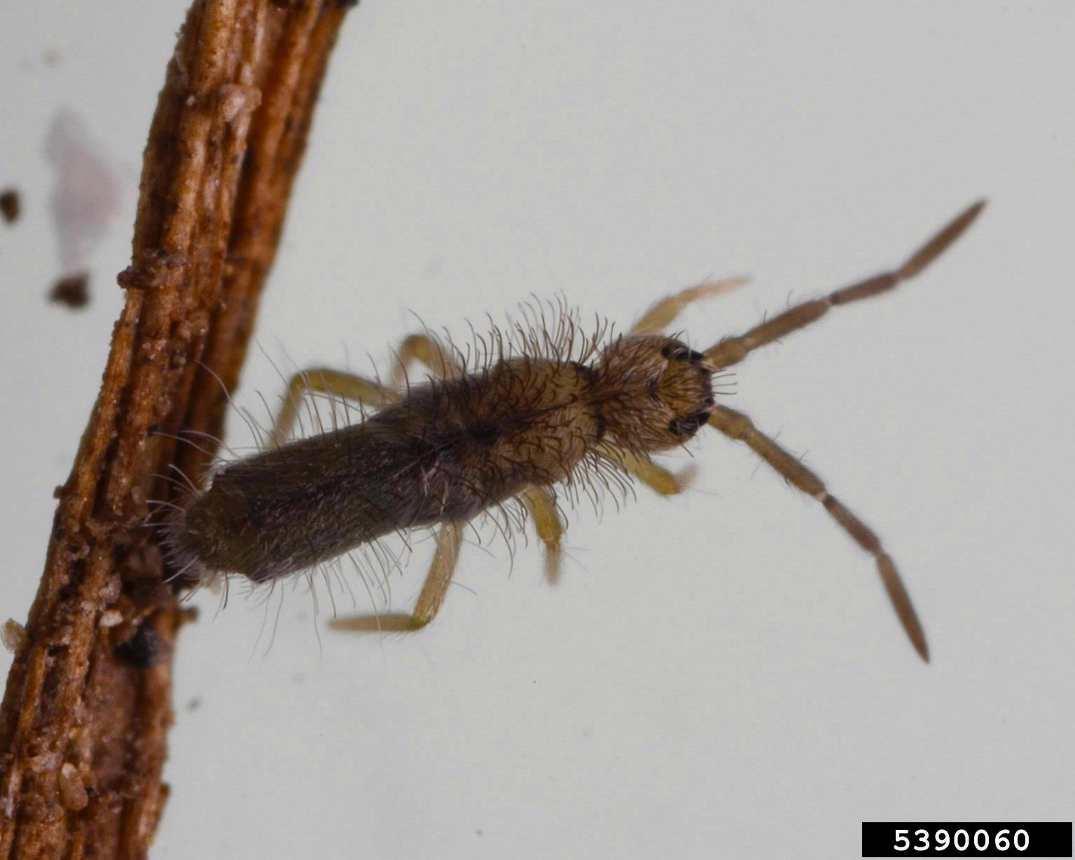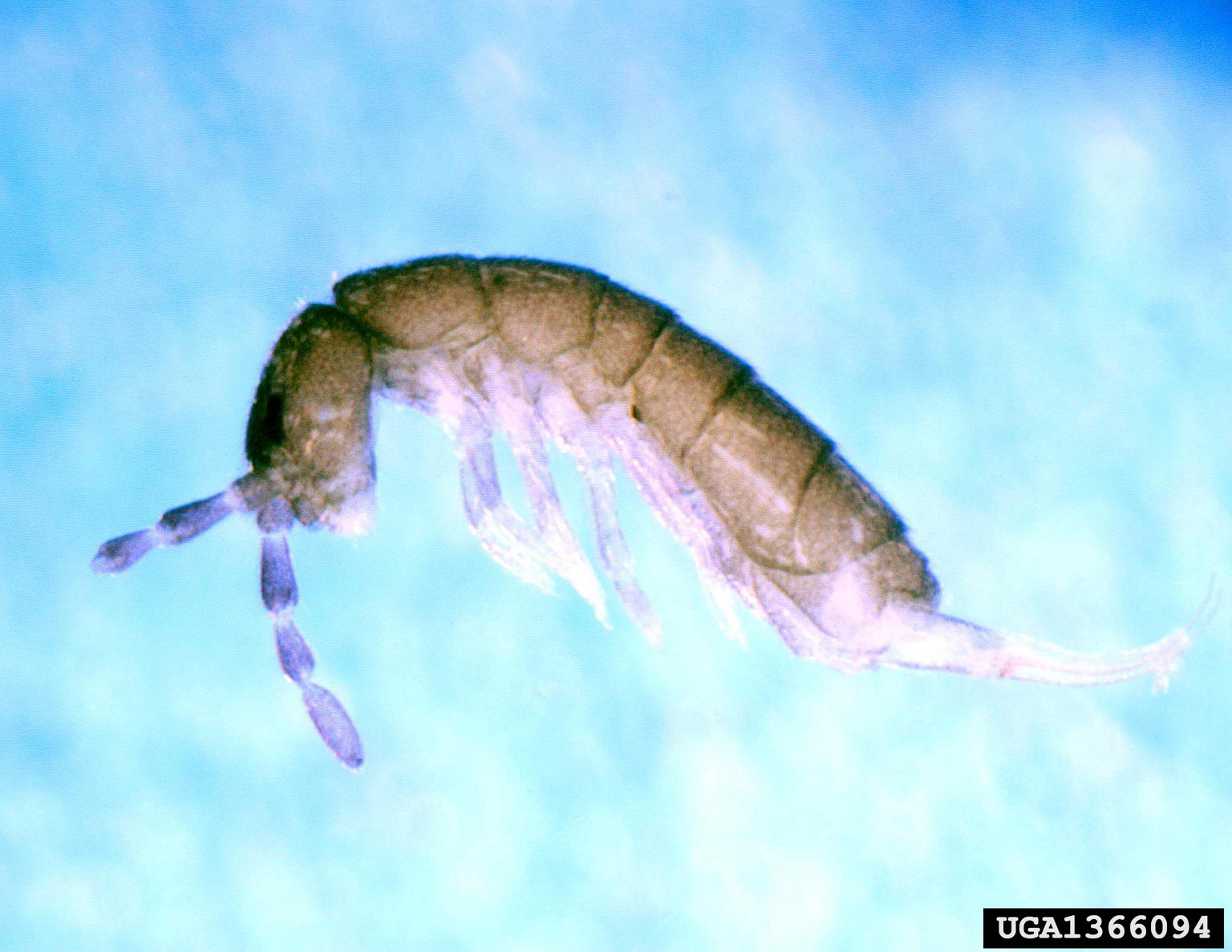Our current weather conditions in South Jersey have provided a “perfect storm” for the invasion of Springtails. Lots and lots of rain, followed by extremely hot, drying weather cause these lovely little critters to multiply and find a way into your home looking for moisture to survive.
Our office has recently received numerous calls for Springtails from all over South Jersey – from Cherry Hill, Moorestown, Cinnaminson, Palmyra, Deptford, Medford, and Voorhees to name a few.
In this article, I will provide you with some detailed Springtail information and outline some of the differences between Springtails and Fleas so you know what kind of invader you have.
Springtails: When I was a kid I used to call these tiny creatures “Puddle Jumpers” because the most common place to see them outside would be in stagnant ponds or puddles – skimming the surface and jumping around.

Also known as “Snow Fleas” – Springtails can withstand extremely cold temperatures and can be seen in the winter snow melts jumping about. I read an article the other day that made me laugh because it mentioned something about them being full of anti-freeze – but homeowners won’t laugh because this occasional invader is a year-round pest. (*Picture courtesy of Joseph Berger, Bugwood.org)
Once inside, Springtails do NOT bite, they do NO damage inside a home, and do NOT transmit human disease. However, some species may cause itching and/or itching dermatitis.
Fleas transport themselves into your home on rodents and other mammals. Once inside they DO bite and they DO transmit human disease. Flea bites commonly cause painful, itchy red bumps.
There are approximately 700 species of Springtails in North America, and they are considered one of the most common soil insects. They are found in potted plants, vegetable matter, and around decaying plants/bulbs.
Springtails are tiny creatures – less than 1/8″ long, have limited vision, 6 legs, and no wings.

They are equipped with a forked muscular appendage (a furcula – which is a hinged appendage) at the end of their body to the abdomen, which when suddenly released, enables them to jump in the air – hence the name Springtail and one of the reasons why they are commonly confused with fleas. (*Picture courtesy of Susan Ellis, Bugwood.org)
Springtails come in all kinds of decorator colors but those found in your house are usually black or white/grayish in color.
 Fleas are a dark-reddish brown, 1/12 to 1/6″ long, and 6 legs. Fleas use their powerful legs to jump as high as 8 inches vertically and 16 inches horizontally. (*Picture courtesy of NPMA)
Fleas are a dark-reddish brown, 1/12 to 1/6″ long, and 6 legs. Fleas use their powerful legs to jump as high as 8 inches vertically and 16 inches horizontally. (*Picture courtesy of NPMA)
Springtails eat organic material – fungi, mold, algae, spores, pollen, decaying vegetable matter, mulch, leaf litter, firewood, logs and landscape timbers.
Fleas are parasites that feed on the blood of any warm-blooded body. The most common species is the cat flea, which often feasts on cats, dogs, and humans.
The feeding activities of Springtails enrich the soil by breaking down these forms of organic matter and releasing the nutrients they contain. Because of these activities, Springtails are considered to be a good indicator of soil health.
You’d be hard-pressed to think of a good indicator of anything for Fleas.
Springtails also have a fondness for water, and it is common for a backyard swimming pool to, quite suddenly, be covered with a layer of springtails that seems to have leaped into it the night before. They are so tiny and light that they easily float on the surface of the water, but are unable to make their way back out again.
Springtails can breed in the damp conditions that persist behind brick veneer, stone facing and wood siding of outside walls, and may be found indoors on floors near outside walls and hallways.
Springtails are nocturnal, meaning they are active at night, and during the sunlight hours will remain hidden in dark, moist micro-habitats.
They are active outdoors on warm evenings, May through September, but can be active indoors all year round.
Springtails can be difficult to control by the time they are found by the upset occupants.
Treatment protocols for these two pests are completely different. If you need help identifying which type of pest you have, feel free to give us a call or you can jump to:
The second part of our series on Springtails, where we discuss “Why Springtails Invade Our South Jersey Homes.”
The third part of our series we will cover “What YOU Can Do if an Invasion of Springtails in your South Jersey Home has already begun.”
